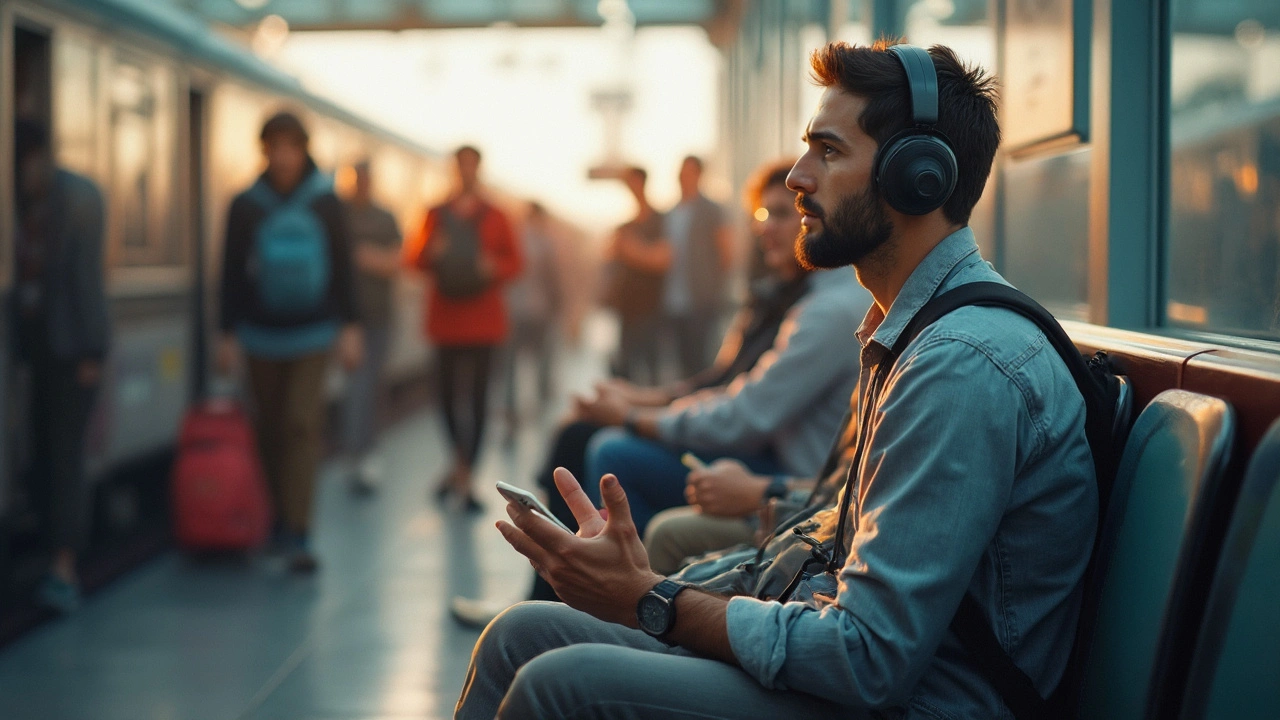It’s the night before your trip; your suitcase is glaring at you from across the room and your mind is running turnstile laps—what if I forget something? What if I panic mid-flight? For anyone with anxiety, travel doesn’t just mean getting from A to B. It’s more like running a mental steeplechase filled with what-ifs and what-nows. Lots of people lean on medication like buspirone to keep the nervousness at bay. But how does managing anxiety mesh with long layovers, cramped airplane seats, bustling train stations, and daily doses? Let’s unravel what it’s really like to use buspirone for travel anxiety, and how you can make it work for you.
Understanding Buspirone and How It Works for Anxiety
If you’re not familiar, buspirone is a prescription medication often used to treat generalized anxiety disorder (GAD). Unlike benzodiazepines—think Xanax or Ativan—it doesn’t sedate you or leave you feeling like you’re trudging through molasses. Instead, buspirone targets serotonin receptors in your brain. That translates into steady anxiety relief, without the drowsiness or foggy headspace. According to the National Alliance on Mental Illness, “Buspirone does not cause dependence, withdrawal, or memory impairment,” which is a relief for anyone worried about getting hooked or losing their sharpness. It typically takes a couple of weeks for the full effect, so don’t expect emergency relief right before that bumpy flight.
What sets buspirone apart is its gentle-but-steady approach to anxiety. You’ll want to take it at the same time every day, not just as-needed. This means consistency is crucial—like brushing your teeth or having coffee every morning. Missed doses can disrupt the balance, so you’ll need to work medication into your travel routine, no matter the time zone. While some people notice dry mouth or lightheadedness, these tend to be mild. The real magic is that it smooths out that free-floating dread, making it easier to actually enjoy your trip—rather than merely survive it.
Let’s talk facts: buspirone isn’t officially labeled for panic attacks or phobias (like fear of flying), but some people do find it buffers their nerves enough to get through stressful situations. If you’re looking for a knockout pill that wipes anxiety on the spot, this one’s probably not for you. But for folks who get knots in their stomach and nagging worries before a journey even starts, buspirone can offer steady relief without the rollercoaster side effects. Travel is about movement, and consistent medication can help keep your mind moving forward too.
Traveling with Anxiety: Realities and Roadblocks
Ever notice how the most well-organized trip can still trigger sweaty palms and racing thoughts? Airports are designed for efficiency, not comfort. Suddenly, you’ve got to navigate security lines, unexpected delays, and fellow travelers with their own ticking time bombs of stress. For people with GAD, these moments aren’t just annoying—they feel overwhelming. Your nervous system can swing out of sync, making even the smallest hiccup feel like a major crisis. Anyone who’s had a panic attack at 30,000 feet knows there’s nowhere to go but inward.
Fact: The Anxiety and Depression Association of America says up to 18% of Americans experience some form of anxiety disorder every year. That’s a major chunk of fellow travelers. Things like loud announcements, unfamiliar foods, or a lack of privacy can spike your anxiety on the road. And let’s face it: “vacation mode” sounds great, but brains with anxiety don’t have an off switch. International travel throws in other hurdles—think jet lag messing with your medication schedule, pharmacy rules in different countries, or language barriers if you need a prescription refill.
Then there’s the unpredictability: lost luggage, rerouted trains, or surprise layovers. It helps to know you’re not alone, but it’s even more powerful to have a survival plan—buspirone as part of your toolkit, not your only tool. If you’re brand new to traveling with medication, double-check TSA’s guidelines. According to U.S. Customs and Border Protection, “Prescription medications must be in their original packaging with your name printed on the label.” This isn’t the time for baggies and sticky notes.

How to Travel Smoothly While Taking Buspirone
Okay, so you’re ready to take on the world—with buspirone in your pocket. Let’s get practical. First off, think about timing. If you normally take your dose at 9 AM at home but your flight lands at noon in Tokyo, your internal clock might protest. Talk to your doctor about a plan for time zone changes. Some people set alarms on their phones (make sure it’s local time!), others use pill organizers with separate slots for each day and time.
Don’t risk running out. Bring more medication than you think you’ll need—two weeks extra is a safe buffer in case your return is delayed. Pack your meds in your carry-on, not your checked bag. You’d be surprised how many suitcases go on vacation without their owners. If you’re heading abroad, snap a photo of your prescription and your doctor’s contact info, just in case you face questions at customs or need a pharmacy backup.
It’s worth mentioning that buspirone can interact with some foods (like grapefruit) and other medications. When you’re eating in new places, keep an eye out. Make a quick list of any major drug interactions or allergies in your phone, so you’re not scrambling for answers if something feels off. Airport tap water is safe in most developed countries, but if you’re somewhere with suspect water, ask for sealed bottles to take your medication.
- Stick to your schedule: set alarms, use pill organizers, and build your medication time into your travel routine.
- Prep documents: bring a copy of your prescription, a doctor’s note (if needed), and essential contact info.
- Double-up: carry extra doses to cover delays or schedule changes.
- Stay open: if you feel side effects ramp up with travel stress, write it down and talk to your doctor about adjustments once you’re home.
Practical Hacks for Managing Anxiety on the Go
Medication can only do so much; the rest is about learning to outsmart your anxiety while you’re away from the comforts of home. Before your trip, try visualizing the journey from start to finish, including uncomfortable moments—will you have to speak a new language, brave a crowded subway, or sleep in an unfamiliar hotel? Walk through those scenarios in your mind and rehearse how you’ll handle them. Visualization primes your brain to manage stress, so you’re not caught off guard.
Headphones aren’t just for music—they’re armor. Download a playlist, guided meditation, or even a podcast that makes you laugh (comedy is an underrated anxiety antidote). Fingering a bracelet, squeezing a stress ball, or keeping a comforting item in your pocket can help ground you. For long-haul flights, bring an eye mask and a neck pillow—tiny physical comforts make a difference in how your body and mind react to new spaces.
Keeping a journal or notes app to jot down anxious thoughts—and what helps you cope—turns panic into practical data. You’ll learn what triggers your nerves and what soothes them. Try a hack: assign each day one “comfort check-in,” maybe a ten-minute break for deep breathing, stretching, or just scrolling cat videos. Eating a familiar snack from home can trigger a little dopamine burst, giving your mood a nudge.
Hydration matters more than you think. Airplane cabins are dry at altitude, which can worsen anxiety for some people (dry mouth, headaches, general crankiness). Carry a reusable bottle (empty for TSA, refill after security) and sip regularly. Don’t overdo caffeine; too much can mimic anxiety symptoms. Herbal teas, electrolyte powders, or just plain water do wonders for the body—and by proxy, your mind.
When you find yourself spiraling, pin this quote from the Cleveland Clinic:
“Learning how to manage triggers and track your anxiety is an essential part of living well with an anxiety disorder.”Make it your mantra when the world gets a bit too noisy out there.

Upping Your Travel Game With Buspirone: Expert Tips and Next Steps
Your trip shouldn’t just be about surviving. With some planning, you can actually thrive—even if anxiety tries to hop in your suitcase. Talk to your doctor before you travel. Ask how buspirone may react with any vaccines or medications you’ll need on your trip. If you’re newly prescribed, trial the medication for a few weeks before leaving, so you know how your body responds.
If you have a mental health crisis abroad, know the local emergency number (911 doesn’t work everywhere) and research nearby clinics. Many U.S. embassies can help you find local doctors. Safe travel means knowing what to do in a pinch, not just what to pack. Bring along a written plan—a “just in case” page in your phone or notebook listing emergency contacts and instructions for anyone helping you, in your language and, if possible, in the local language.
Here’s an extra hack: use tech to your advantage. Apps like Calm or Headspace help with guided breathing or quick meditations, while Google Translate breaks language barriers if you need to speak with a pharmacist. Make a checklist—meds packed, prescription filled, doctor’s notes prepped—and store digital copies in your email or cloud.
Buspirone isn’t the rock star of anxiety meds, but for travel, its reliability and low side effect profile make it a solid lead in your mental health playlist. Why let anxiety dictate your itinerary when you can build your own roadmap? Whether you’re backpacking through Europe, braving your first solo trip, or just trying to make it through a family reunion without unraveling, the right strategies—medication included—let you experience more and worry less. Live for the little wins: watching a sunset you’d never see at home, trying new foods, or just realizing you’re okay, right where you are.
Ready to take the next step? Make a packing list for your brain, not just your suitcase. Travel anxiety may not disappear overnight, but it doesn’t have to be the loudest voice on your journey.







Robert Gallagher
June 29, 2025Buspirone’s not magic but it’s the quiet hero of anxiety meds. No drowsiness, no crash, just steady calm. I took it for six months before a solo trip to Japan and honestly? I didn’t panic once. Not at security, not on the bullet train, not even when I got lost in Kyoto at 2 a.m. with zero phone signal. Just breathed. Took my pill. Kept walking. It’s not about being fearless-it’s about being functional.